'You could turn up to a race in the rainbow jersey, and no one would bat an eyelid'
How a former British hill climb champion ended up being a marked man on the Indian road racing scene
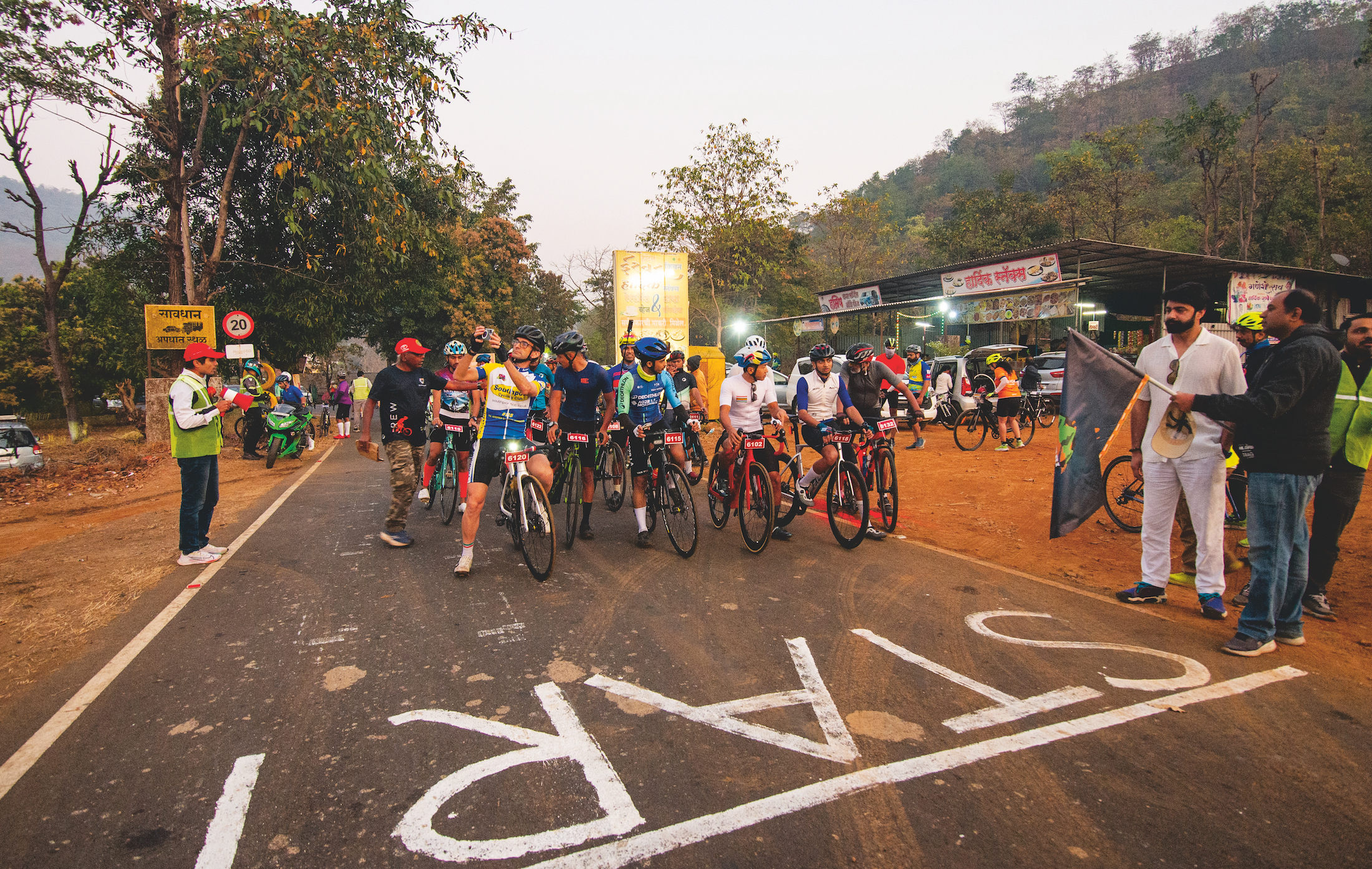

The Western Ghats, a tropical mountain range in India, are home to tigers, leopards, elephants and monkeys. Fortunately, it was only the monkeys that made an appearance when Jim Henderson crashed during a gruelling road race in February.
The Sahyadri Classic, one of India's most prestigious races, saw nearly 200 riders from all over the subcontinent competing on a course that included six ghats - mountain passes - and 3,460m of climbing. Five-time UK national hill-climb champion and veteran of the Premier Calendar road race series, Henderson was a marked man as he lined up for the start in the pre-dawn light.
The 53-year-old had finished second the previous year, winning 50,000 rupees (£500), his biggest cash prize in 30 years of racing. For most of the first 19km climb, Henderson managed to stay on the wheel of eventual winner Athokpam Singh, a member of the Indian national track team who, Henderson notes, "was in nappies when I won my first UK hill-climb in 1998."

"The first climb had an excellent surface with big sweeping bends, like the Alps except with the occasional monkey in the road, and I was sixth over the top," he says. "I was third on the second climb after grinding out a steady 250 watts for 13 kilometres. At the top, I refilled my bottles - it was 10 o'clock and 25°C, and I'd already drunk two. Then I started my descent to the foot of the next climb.
Unfortunately, I never got there." Henderson crashed into an oncoming car after overtaking another rider and, by his own admission, "being distracted by a stunning view of the valley below." An ambulance was on the scene within minutes and he was taken to a rural hospital where X-rays confirmed a fractured femur. He needed to be transferred to a bigger hospital for an operation.
His wife Lou joined him in the ambulance. "She was mainly there to stop me from rolling off the stretcher, which was extremely narrow and meant my head was next to the spare tyre," says Henderson. "The journey took three hours. It was 35°C, with no air conditioning. We had to stop twice: once to find an electrician to fix the siren which had stopped working, and then again so the driver could have a cup of chai."
Jim and Lou, both members of Southport CC, arrived in India in November 2022 with eight bikes and Tom, 15, the youngest of their four children. Jim had been posted to the city of Pune, 160km east of Mumbai, as head of engineering for the parent company of his Lancashire employer, Leyland Trucks. "It helped that it was November," says Henderson.
The latest race content, interviews, features, reviews and expert buying guides, direct to your inbox!
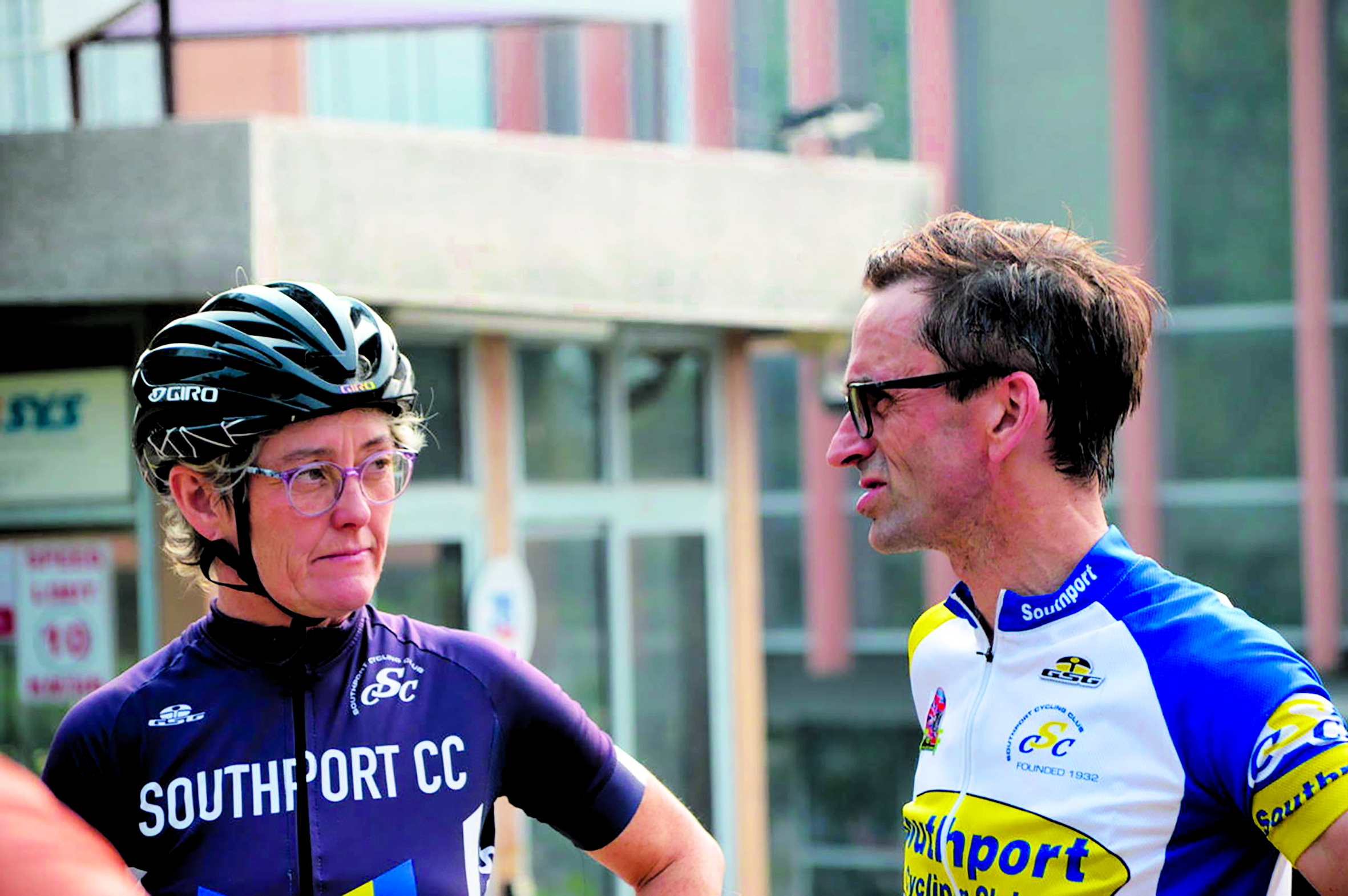
Both Jim and Lou Henderson have thrown themselves into India's racing scene
"Instead of four months of long nights and potentially icy roads, every weekend was like a Majorca training camp-long, quiet climbs and 30°C heat. I was hooked." Despite not having entered a road race since 2015, Henderson, who holds Southport CC's record for the 12-hour TT, was keen to start competing again on his Dolan Ares race bike.
But there was no organised calendar of events in India, either at national or grassroots level, so he had to rely on word of mouth and WhatsApp groups to find out about races. "This makes for some interesting events," he says. "There are clubs, but race organisers don't care whether you are a member of one. You don't need a licence and there aren't any ability-based categories."
Henderson describes the non-hierarchical scene: "Anyone over 18 is classed as elite. I ride every event in the Southport CC kit that I brought with me, but you could ride in a trade team kit or the rainbow jersey and no one would bat an eyelid."
One of his first races in India finished at the top of a 12km climb, requiring all the tactical nous that made him UK national hill-climb champion five times in the late 1990s and early 2000s. Except he had never had to deal with monkeys at the roadside on the Rake in Ramsbottom. "Despite that distraction, and being worked over by riders younger than my children, I managed to finish third," he says.
His run of form continued, with wins or podium finishes in the masters category of road races, hill-climbs and city centre crits, including one in their adopted home city of Pune. "It's a city of nine million people, but they still had to clear cattle from the course and tether horses at the roadside," says Henderson.
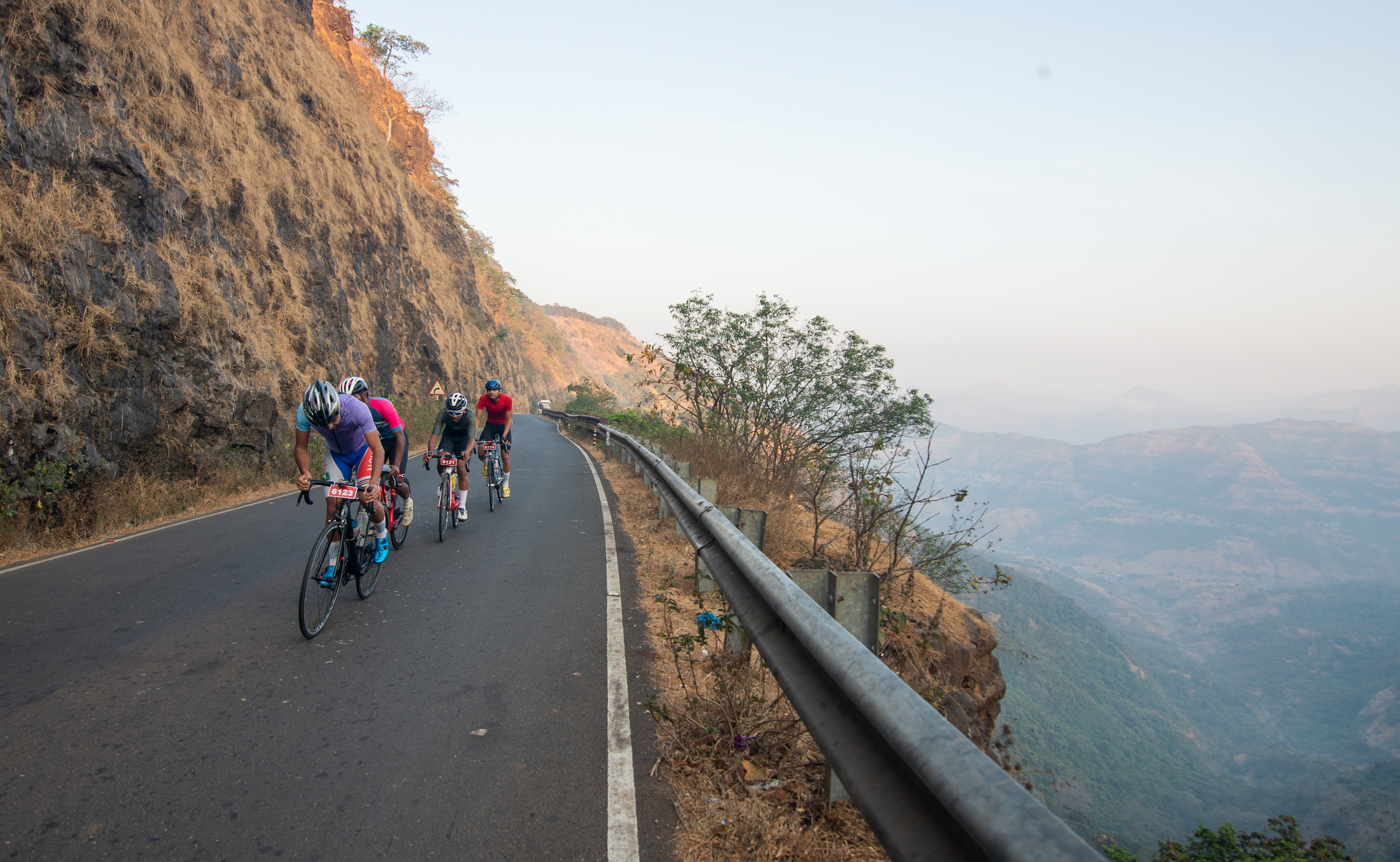
There's no shortage of climbs in western India
"We did 10 laps of a 1.2km circuit that was square-shaped - three of the roads were closed, while on the other, two marshals holding a piece of heavy rope ran out to clear traffic. I got into a two-up sprint but the big legs and enormous jockey wheels of the other guy should have been a giveaway - and I finished second."
Lou has also immersed herself in the racing scene, most recently competing in a women's crit in a suburb of Pune that involved dodging "sleepy street dogs, chai stalls, the odd rickshaw going the wrong way, and a herd of buffalo that were being taken to pasture through an industrial estate".
She describes India's racing scene as "a lot more accessible," adding, "there's no snobbishness about the bike or looking the part. Many women don't have cycling shoes and cleats, so racing in trainers and flat pedals is normal. Although fields are small compared to the men's, the women who compete are really into their training regimes and diets."
The weather, traffic and culture have impacted how the Hendersons fit training around their work and daily lives. Monsoon season curtails outdoor cycling from June to September, so an indoor trainer shipped from the UK has been essential. For the rest of the year, they are out by 5.30am in the morning to avoid the high daytime temperatures and peak traffic.
At weekends they head out to the quieter, cooler roads of the Western Ghats, but even here the water in their bidons soon heats up and they are forced to stop regularly at roadside stalls. As for Indian traffic, Henderson says it's not as dangerous as it may appear. "Yes, there are all kinds of vehicles, some going in the wrong direction, with the odd cow and stray dog thrown in for good measure," he sets the scene.
"But there are so many underpowered or overloaded vehicles that speeds in towns are very slow, usually no more than 15mph." Motorist attitudes are also more relaxed than back in the UK
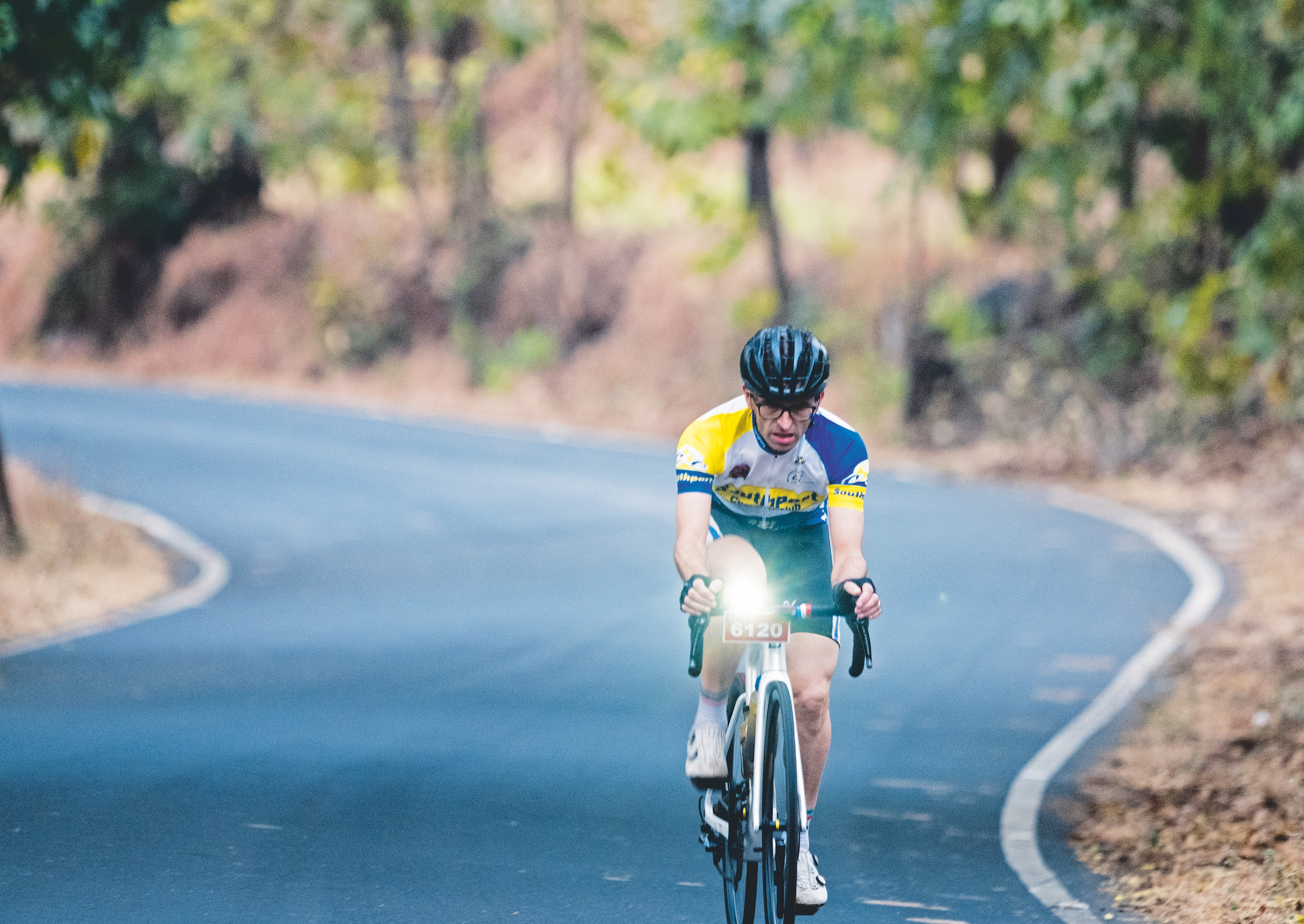
Former hill climb champ Henderson thrives in the mountains
"The other wonderful thing is there is almost no ego at play. So if someone chooses to drive on the wrong side of the road, everyone just squeezes up a bit to let them through rather than winding down the window and tell them what they've done wrong."
Lou adds: "While it would be wrong to romanticise the desperately hard lives people lead - carrying water on their heads along the roads or living without toilets or electricity - I think the simpler life means people have more important things to worry about than making life a misery for cyclists like [some drivers do] back home."
Lou, who worked as a project officer for active travel charity Sustrans before leaving the UK, is involved with an initiative called Ek Beti Ek Cycle - meaning 'one daughter, one cycle' - aimed at providing teenage girls in rural areas with bicycles. "I was humbled and shocked to find out that 60% of girls in rural India do not complete their education after the age of 14 for want of transport," she says.
"The cost of a bus pass is 1,000 rupees [£10] per month, which for many families is unaffordable. Ek Beti Ek Cycle donates recycled bikes to girls in this situation, helping them get fitter as well as complete their schooling." The Hendersons are full of praise for local race organisers who, they say, have helped make the sport more inclusive by attracting sponsors and offering more age categories while dealing with the same bureaucratic and financial headaches faced by their UK counterparts.
Siddharth Hivarekar of race promoters Western State Sports Management says: "Closing roads is usually not an option, as it's very hard to get permissions to do so. This has resulted in fewer road races in the past couple of years, and an increase in alternatives such as criteriums and hill-climbs." His efforts seem to be working. "We even organise a 'Monsoon Classic', to encourage people to keep riding in the rainy season.
Thankfully, we are seeing an increase in the number of cyclists, both recreational and competitive." Meanwhile, Henderson is making a good recovery from his crash. Despite having a 95mm titanium pin screwed into his femur and still being on crutches, he has been told he can start weight-bearing exercises.
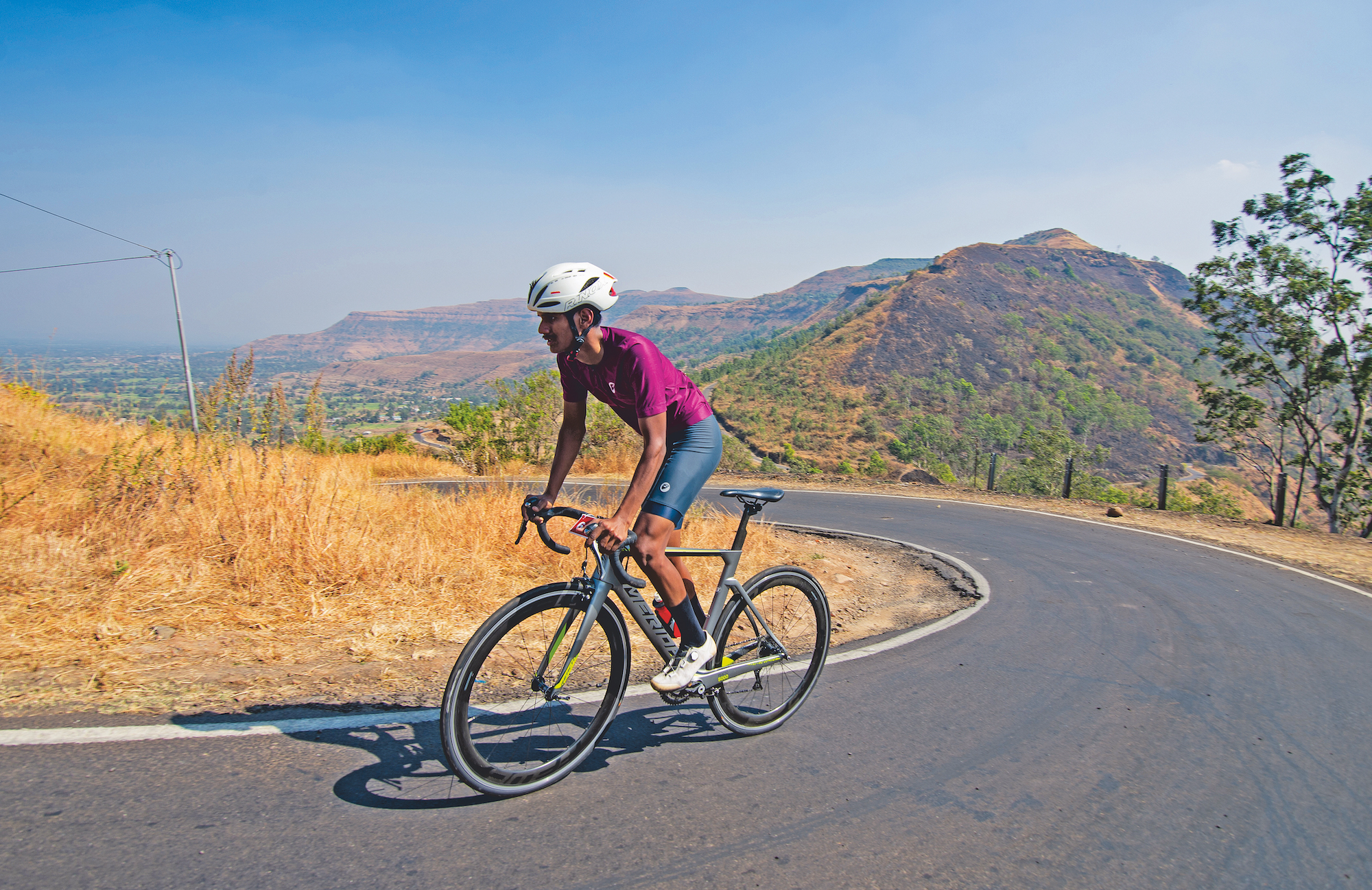
The Hendersons are due to return home to the UK later this year. Before then - recovery permitting - Jim hopes to get some track racing in at the Pune Velodrome and also fit in some adventure riding on his 'folding' Ritchey gravel bike. Lou, meanwhile, hopes to fit in some more races between her campaigning work for Ek Beti Ek Cycle. Their time in India may have tested their resilience, but it has also left them with memories that will last a lifetime.
ANOTHER ENGLISHMAN ABROAD
Another Brit competing in February's Sahyadri Classic race was Nigel Smith, who moved to India in 2015 after racing for Southborough Wheelers in Kent since 2008. Smith, who lives in Mumbai with his wife, has raced all over the subcontinent. At the Sahyadri Classic, he won 5,000 rupees (£50) for being the first in the over-50s category up the first ghat, a 19km climb to Pratapgarh Fort, but faded by the end of the race. "A four-hour event with 2,000-plus metres of elevation can't be ridden off the back of 60-minute indoor rides," he says.
Mumbai-based Smith is a racer and coach "I've raced in 30°C plus and had to swerve to avoid traffic so many times -mainly cars, motorbikes, rickshaws and dogs," Smith continues. "For most races, any road closures, police attendance or traffic management costs a fair bit so usually the front group is marshalled by motorbike outriders that stop overtaking cars getting too close and hold traffic at junctions. It can be pretty hairy."
He has returned to the UK several times to earn his Level 3 British Cycling coaching qualification and now has a roster of clients he offers training sessions to, either in person or remotely via Training Peaks. Working with bike brand Scott, Smith has helped set up an Indian development team. "We ran performance-screening camps [and] eventually had a team of four who Scott provided bikes and accommodation for.
They lived in an apartment 150 kilometres outside Mumbai where there were better roads and cleaner air." Despite almost making the podium in some "quite big races", supply problems following Covid led to Scott withdrawing its support. Smith has started working with the Sri Lankan Air Force Cycling Team - currently on hold while "political barriers are overcome".
The highlights of his own racing career include winning a masters race in Nashik, at 800m above sea level. "Although the size of the field was about 30 riders, only three of them were real competition," he says. "I won a new Giant alloy road bike which I promptly sold on the spot for 10,000 rupees [£100]."
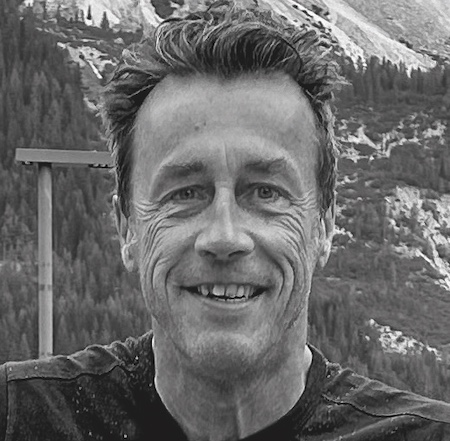
Trevor Ward is a veteran journalist who has experienced writing from war zones, rubbed shoulders with music royalty in various green rooms, but now specialises in writing about cycling. He is a training Bikeability instructor and can often be seen riding along the east coast of Scotland
You must confirm your public display name before commenting
Please logout and then login again, you will then be prompted to enter your display name.